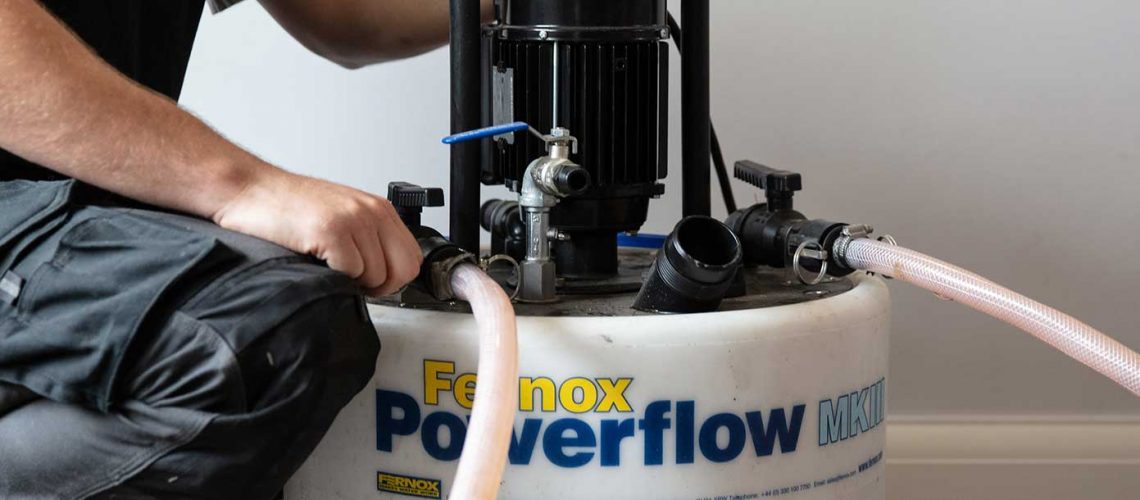The invention of the powerflushing system has been vital in the battle against sludge in central heating systems. Sludge, which is an iron oxide, is a buildup caused by the reaction between the steel in the radiators and heated water when pumped through the system. The sludge settles in the radiators and causes blockages, resulting in inefficient output, more frequent breakdowns, and higher fuel bills. To read more on the effects of sludge read our blog here.
Why Powerflushing Shouldn’t Be Necessary.
The issue the majority or heating engineers have with powerflushing is that it is avoidable. The first discovery of oxidisation in central heating systems prompted the development of inhibitor chemicals to neutralise the reactive effect water has with steel. Following the correct commissioning procedure, heating engineers add inhibitor chemicals to the central heating system. The inhibitor will continue to work year on year as long as the system remains untouched. The inhibitor must be replaced if the heating requires draining for maintenance work.
Powerflushing – A Cure for Poor Commissioning and Regular Maintenance.
Unfortunately, there is a need for powerflushing and it is most likely the case of poor commissioning or maintenance. Correct commissioning is the key, and we have a blog here specifically about commissioning. We have seen many new central heating systems cease working within 5 years because of the lack of commissioning process.
Every year, manufacturers require a safety check of your gas central heating boiler. It is wise to include a system check that should include a visual inspection of the central heating water. If you are new to your property or you are replacing the boiler in your house, it is vital that the heating company check the condition of the radiators and the central heating water quality. Failure to do so can lead to expensive call-outs.
Prevention Is ALWAYS Better Than Cure.
Catching the effects of iron oxide early can prevent the need for an expensive powerflush. It may require adding a chemical treatment to a system to break down the process. After a few weeks, we drain this chemical from the system. We added a fresh inhibitor when we refill the system. To protect the system further, we install filters to central heating systems that use magnetic fields to trap the iron oxide particles as they flow around the system.
Let us be clear: powerflushing will help restore your central heating system, but it isn’t a cheap fix. This process is usually a full day of work using specialist machinery and strong powerflushing chemicals. The more radiators the longer the procedure. Where necessary, we remove and flush radiators heavy with sludge separately.
Powerflushing Your System: The Procedure.
- We attach a powerflushing machine to the central heating system and introduce a strong chemical into the machine.
- The powerflushing machine pumps the chemical around the radiators and boiler.
- Gently tapping of a radiator with a rubber hammer can help dislodge any stubborn sludge buildups.
- The powerflushing machine can reverse the flow of water around the system, pushing water against the flow of the sludge.
- Turning off radiators increases pressure into each open radiator for a deep cleanse.
- We can also switch the boiler on low as the heat can help speed up the process.
- Sludge settles in the powerflushing machine and emptied periodically.
- When the system water runs clear through the powerflushing machine, the procedure is complete.
- Install a filter to the system if required.
- We remove the machine; we add a new inhibitor, and the system is refilled and tested.
To find out more about powerflushing for your central heating follow the link here. If you would like any help with your central heating system, contact us here.

